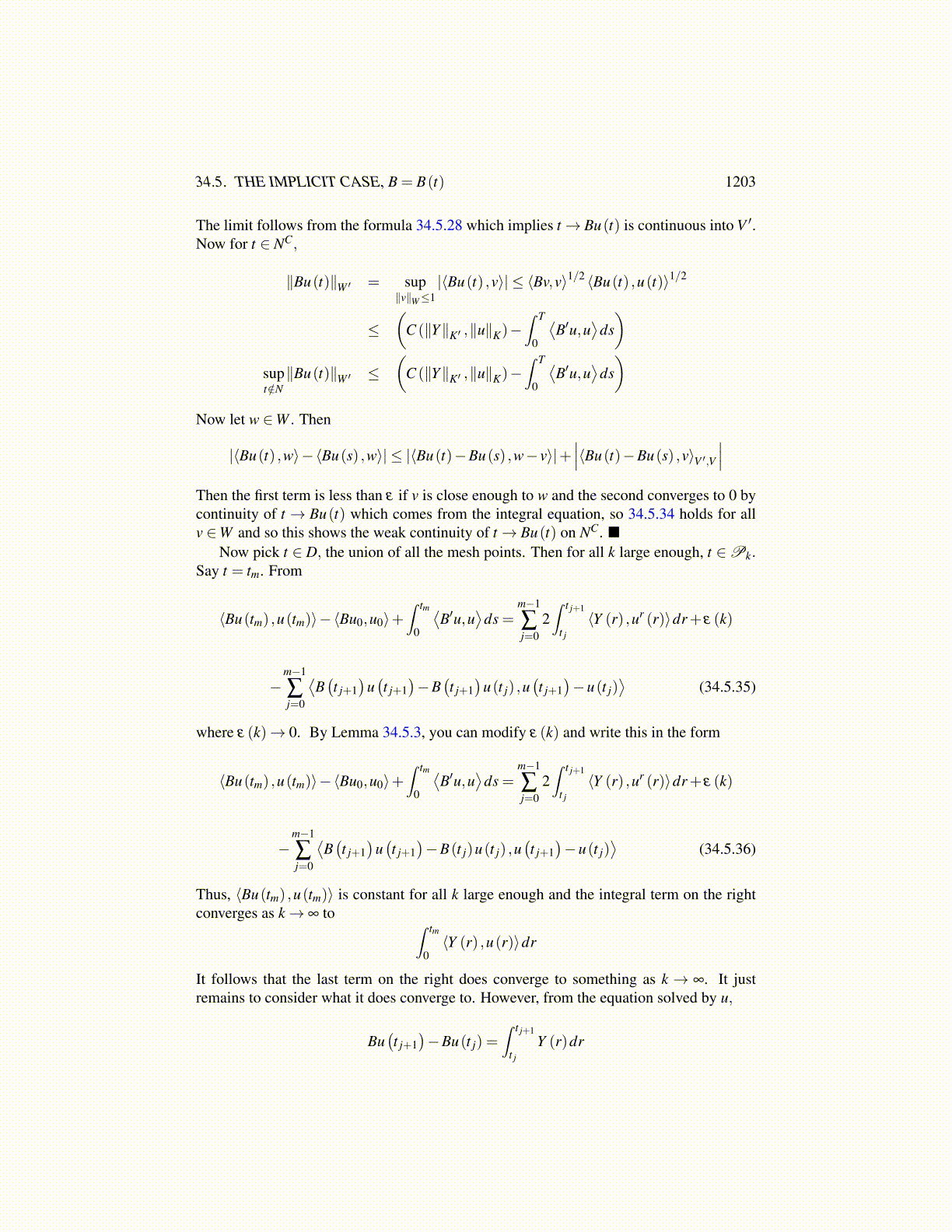
34.5. THE IMPLICIT CASE, B = B(t) 1203
The limit follows from the formula 34.5.28 which implies t→ Bu(t) is continuous into V ′.Now for t ∈ NC,
∥Bu(t)∥W ′ = sup∥v∥W≤1
|⟨Bu(t) ,v⟩| ≤ ⟨Bv,v⟩1/2 ⟨Bu(t) ,u(t)⟩1/2
≤(
C (∥Y∥K′ ,∥u∥K)−∫ T
0
⟨B′u,u
⟩ds)
supt /∈N∥Bu(t)∥W ′ ≤
(C (∥Y∥K′ ,∥u∥K)−
∫ T
0
⟨B′u,u
⟩ds)
Now let w ∈W . Then
|⟨Bu(t) ,w⟩−⟨Bu(s) ,w⟩| ≤ |⟨Bu(t)−Bu(s) ,w− v⟩|+∣∣∣⟨Bu(t)−Bu(s) ,v⟩V ′,V
∣∣∣Then the first term is less than ε if v is close enough to w and the second converges to 0 bycontinuity of t → Bu(t) which comes from the integral equation, so 34.5.34 holds for allv ∈W and so this shows the weak continuity of t→ Bu(t) on NC.
Now pick t ∈ D, the union of all the mesh points. Then for all k large enough, t ∈Pk.Say t = tm. From
⟨Bu(tm) ,u(tm)⟩−⟨Bu0,u0⟩+∫ tm
0
⟨B′u,u
⟩ds =
m−1
∑j=0
2∫ t j+1
t j
⟨Y (r) ,ur (r)⟩dr+ ε (k)
−m−1
∑j=0
⟨B(t j+1
)u(t j+1
)−B
(t j+1
)u(t j) ,u
(t j+1
)−u(t j)
⟩(34.5.35)
where ε (k)→ 0. By Lemma 34.5.3, you can modify ε (k) and write this in the form
⟨Bu(tm) ,u(tm)⟩−⟨Bu0,u0⟩+∫ tm
0
⟨B′u,u
⟩ds =
m−1
∑j=0
2∫ t j+1
t j
⟨Y (r) ,ur (r)⟩dr+ ε (k)
−m−1
∑j=0
⟨B(t j+1
)u(t j+1
)−B(t j)u(t j) ,u
(t j+1
)−u(t j)
⟩(34.5.36)
Thus, ⟨Bu(tm) ,u(tm)⟩ is constant for all k large enough and the integral term on the rightconverges as k→ ∞ to ∫ tm
0⟨Y (r) ,u(r)⟩dr
It follows that the last term on the right does converge to something as k → ∞. It justremains to consider what it does converge to. However, from the equation solved by u,
Bu(t j+1
)−Bu(t j) =
∫ t j+1
t j
Y (r)dr